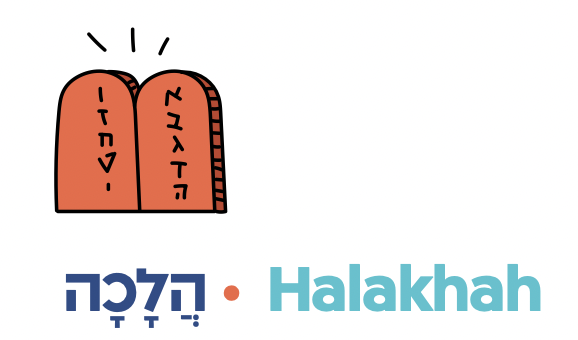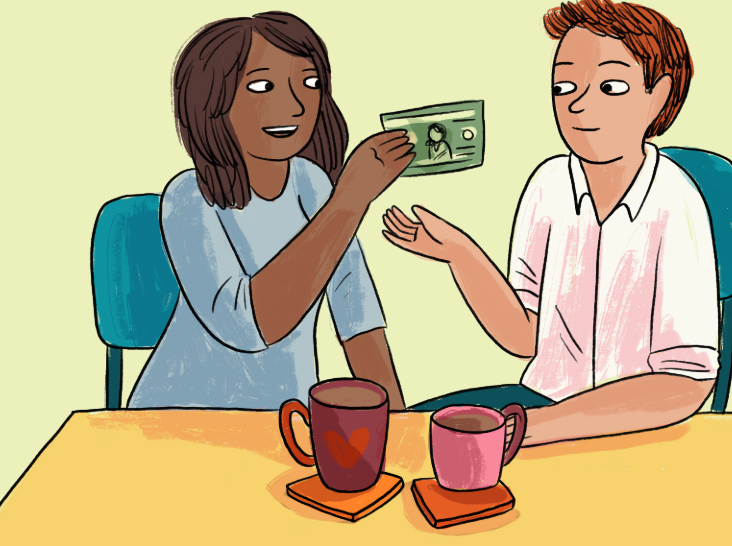Illustration Credit: Noa Kelner

Halakhah הֲלָכָה
Hazal say tzedakah is so important that it’s equal to all the mitzvot combined! (Bava Batra 9a)
A lot of our halakhot about tzedakah come from Parashat Re’eh. For example, from the first pasuk quoted in Understanding the Verses (Devarim 15:7), we learn about how to prioritize our giving (Shulhan Arukh Yoreh Deah 251:3):
- כִּי יִהְיֶה בְךָ אֶבְיוֹן - “If there is a needy person among you” - We first give tzedakah to people who are most in need.
- מֵאַחַד אַחֶיךָ - “one of your family” - We give to relatives and close friends before others (if they are all in the same amount of need).
- בְּאַחַד שְׁעָרֶיךָ - “in any of your settlements” - We support people in the community where we live before sending our tzedakah far away.
Ways to give
Rambam (Matenot Aniyyim 10:8-11) teaches that there are eight levels of giving tzedakah. The best way is to give someone a job or teach them how to make a living on their own. That way, they no longer need to rely on tzedakah. The lowest level of giving is when your heart isn’t in it and you give the least amount just in order to fulfill your obligation.
Rambam also emphasizes to be careful not to embarrass people who receive tzedakah. He thinks it’s best for the person giving not to know who’s receiving it, and for the person receiving not to know who’s giving the tzedakah. That way, no one will feel embarrassed, or like they owe something back.
How much?
Based on ma’aser, the target is to give to tzedakah 10% of what we have. Rambam says a higher level is to give 20% (Matenot Aniyyim 4:5). This amount is considered the upper limit; we aren’t allowed to give more than 20% of our property because then we might become poor (Shulhan Arukh Yoreh Deah 249:1).
However, some say that even after you’ve given 20% of your property away, if a person asks you for tzedakah, you should still give something. This is based on the words in Devarim 15:7: “do not harden your heart and do not shut your hand.” This teaches us that if someone asks, you’re never allowed to say “no” - you have to give at least something small (Rashba Shevuot 25a).
If you have $100 to give away, it is better to give it away all at once, or to give $10 to 10 people? Rambam says: Better to give more times rather than all at once. This is because the more times we give, the more we teach ourselves to be giving people, and that shapes our personalities and behaviors in important ways.
Because giving tzedakah has such a powerful impact on the giver, the mitzvah to give tzedakah even applies to people who are poor, and who are themselves supported by tzedakah! (Bavli Gittin 7b, Shulhan Arukh Yoreh Deah 248:1)

-------------------
-------------------





